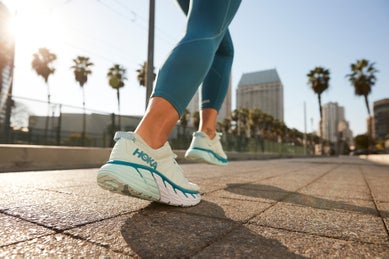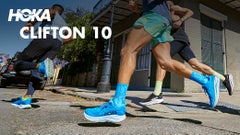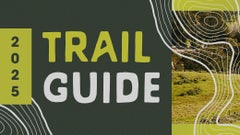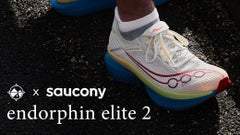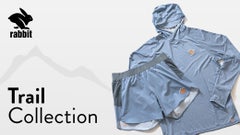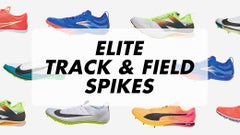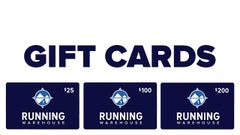Understanding Running Shoe Components & Terminology
Updated: May 8, 2024

With all the different features in running shoes today, reading a shoe's spec list can feel like deciphering a foreign language. Below, we have compiled a list of the different shoe components to help you translate the complex world of running shoe terminology. We hope we can clear up some of the confusion from those techy shoe descriptions to help you find the best running shoe for your needs and understand how all those different features can have you running at your best.
The Upper
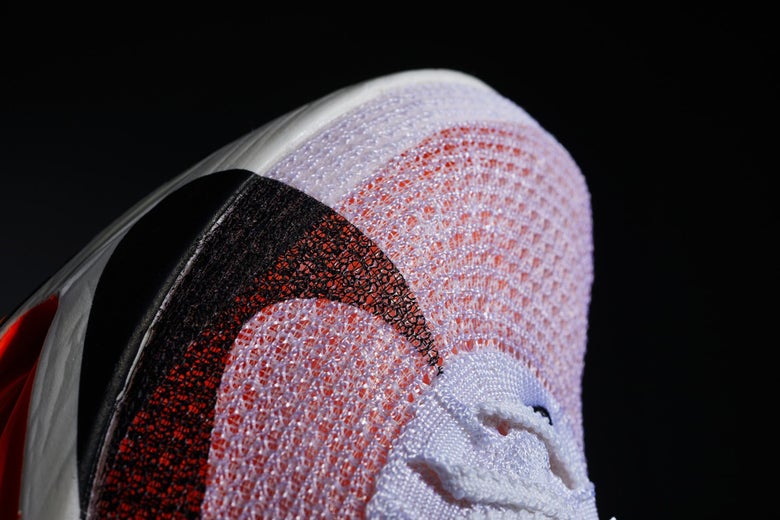
As the name suggests, the upper of a shoe consists of all parts or sections of the shoe above the sole. The purpose of an upper is to hold the foot in place and prevent excessive movement from side to side or up and down. Integral to the shoe's fit, it is important to have a comfortable upper that is not stiff, has good breathability (especially in warm climates), and offers a supportive softness that won't cause blisters or other irritations.
It's All in the Material
The upper typically includes materials like knit or mesh with variations within shoe brands. The technical term for this material is the vamp (you can use that to stump your friends on trivia night!), which covers the area from the toe box to the heel collar, exempting the lacing and tongue portion.
- Knit - Comfortable and flexible, this machine knit material offers great stretch, is less prone to irritation, and has little to no break-in period. Heavier than most mesh uppers, they can also hold more moisture and aren't as protective for trail running. If you have a wider foot or want that super comfortable feel on your foot, a knit upper with its soft stretch would be a good choice.
- Engineered mesh - Made from nylon or polyester, this type of upper is super lightweight and more durable than its knit counterpart. The engineered mesh also characteristically has a more snug fit and may have limited flexibility, which might require some break-in time and may lead to some tears. The mesh is popular for faster training or race days as the light construction saves on the shoe's total weight.
- Jacquard Mesh - Primarily constructed from polyester, jacquard mesh is light, breathable, and provides comfort with its smooth, soft feel. This type of mesh has a woven pattern in the fabric for aesthetics but also creates a comfortable, moisture-wicking environment.
Small Details with Big Impacts
- Overlays – Synthetic materials that crisscross the knit or mesh upper to provide support and reinforcement.
- Heel Counter – The heel counter is the internal semi-rigid or rigid structure of the shoe that wraps around the heel of your foot. It holds the heel in position during the movements of running.
- Collar – Foam padding that surrounds the sides and rear of the shoe, which helps hold the foot in place, supporting the heel and Achilles tendon. The collar prevents the foot from slipping inside the shoe and makes it more stable to run in.
- Toe Box – The front portion of the upper that creates the space above and around the toes. A running shoe's toe box should be roomy enough in length, width, and height to allow the foot to expand as you run.
- Laces - The strings or cords used to securely cinch and tie your shoe for a secure fit. Various types of laces are used in running shoes, from flat strings to round versions with toggle locks. The laces run along the top in a crisscross manner but can be strung in different ways with different lacing techniques to provide that perfect fit.
- Eyelets - The small round holes along both sides to thread your laces through. In running shoes, you will often see an extra eyelet next to the top one, used to create a lace lock or "runners loop" to help keep the heel from slipping and mitigate extra rubbing and irritations.
- Tongue - The tongue is the strip of material located underneath the shoelaces on the top of the foot. The material and the padding thickness vary amongst different brands and types of shoes. The tongue needs to be comfortable and serves as added protection from the laces.
| Types of Shoe Tongues | |
| Gusseted | The tongue is attached to both sides of the shoe. A popular choice for trail runners to keep debris out. |
| Semi-Gusseted | The tongue is partially attached, which can be one side or part of the way up along the laces. |
| Non-gusseted | No side connection of the tongue. Popular in racing shoes to save material weight. |
- Waterproof Options - Some shoes integrate a breathable waterproof membrane like GORE-TEX (or GTX) or a proprietary material that repels water while ensuring your feet can breathe. Learn more about how to keep your feet dry and protected from the elements in our gear article on Waterproof Running Shoes.
- Integrated Gaiter - Some trail running shoes feature a bootie or sock-like construction with an integrated gaiter. Running gaiters are an extension of the heel collar that covers the ankle and top of the foot to prevent loose debris from entering the shoe. If your shoe does not have this option already built in, you can add running gaiters on top of your shoe for added protection.
The Midsole
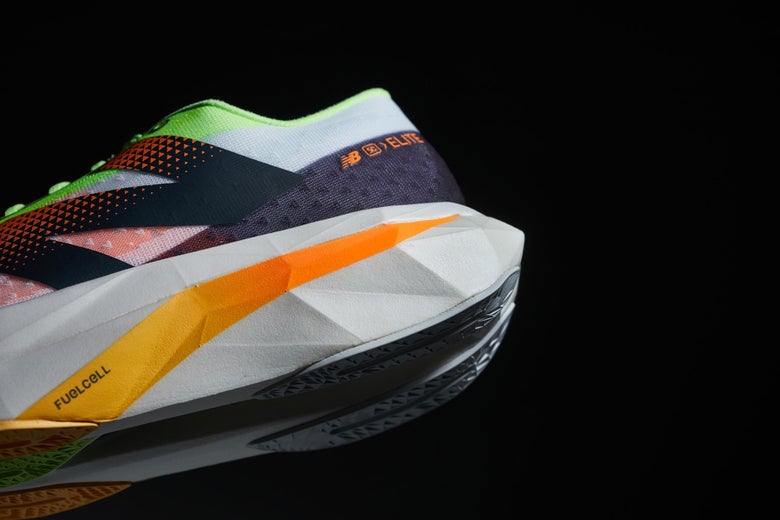
Located between the upper and the outsole, the midsole is the part of the shoe where the cushioning and pronation control technologies are found. A shoe's midsole is usually made from plastic materials that feel and behave like foam or rubber, and the overall midsole composition dictates the durability or longevity of the shoe, as well as the quality of the ride.
Types of Foams
- Compression-Molded EVA – The most common insole material for that tried and true classic and durable foam. EVA stands for "ethylene vinyl acetate," and has been around since 1975 and is the least expensive tech of the bunch. This foam does show sensitivity to colder conditions, which will cause the foam to stiffen and lose that softer feel.
- Thermoplastic Polyurethane (TPU) – Another type of material that behaves like plastic or rubber and is used in midsoles. Polyurethane is not as commonly used as EVA because it tends to be heavier and firmer, but it offers great grip, cushion, and durability while feeling great underfoot.
- Polyether Block Amide (PEBA) - Lightweight and highly resistant premium foam with high responsiveness and energy return. With its premium makeup and exceptional properties that remain consistent in various temperatures, a higher price point is to be expected.
- Dual-Density or Multi-Density Midsole – Dual-density midsoles have two different densities of material, while multi-density midsoles have more than two densities. Shoes designed to prevent overpronation usually have dual- or multi-density midsoles.
- Supercritical - This type of foam is constructed from an advanced technique using a supercritical fluid foaming process. A polymer material (typically an EVA or polyurethane) and a gas exposed to pressure and temperature conditions create this improved and exceptional foam that is lightweight and has an enhanced energy return.
Other Midsole Components
- Medial Post – This device is located on the medial or inside of the shoe. Made out of plastics and found in shoes categorized for stability, the medial post is placed in a shoe to reduce overpronation.
- Performance Plates - A performance plate in running shoes is embedded in the midsole to work with the foam to increase energy return, meaning runners can run faster and more efficiently while expending less energy. There are two common materials used for performance plates:
| Carbon Plate | The thin carbon fiber plate is very stiff, adding some stability and great propulsion in tandem with the foam. Designed for that serious runner, see our Best Carbon Plated Running Shoes for more details. |
| Thermal Plastic Unit (TPU) or Nylon Plate |
TPU and nylon plates are less snappy, equating with less propulsion. They still provide stability, protection, and durability to the shoe. These plates are not as stiff as carbon, allowing greater flexibility to the runner's foot. |
- Rock Plate - Designed for trail shoes, a rock plate is a thin plastic or sometimes a carbon fiber piece situated between a trail shoe’s midsole and outsole (or between the midsole and insole). The rock plate's primary function is to shield the foot from sharp objects like rocks and inadvertently add rigidity.
The Outsole

Typically made of rubber, the outsole is the bottom of the shoe that provides traction and durability. The outsole contributes to how soft or firm the shoe "rides" as well as its torsional rigidity and flexibility.
Components of an Outsole
- Lugs - Small points of raised rubber material protruding from the outsole of most trail shoes. Lug lengths and patterns vary depending on the types of surfaces and conditions the shoe is designed for. Wet/muddy terrain would use longer lugs (up to 8 mm) to give the runner more grip and traction, whereas less aggressive lugs (under 4 mm) are often applied to road-to-trail shoes.
- Flex Grooves - Horizontal grooves in the forefront of the shoe to promote forefoot flexion across the ball or the metatarsal section of the foot when force is being applied during running.
- Spikes - Found on racing shoes for track or cross country, these are small metal spikes or pins that fit into the spike wells on the underside of the shoe to give you extra grip and be able to run faster on certain terrains.
- Snow Spikes - Snow spikes are found on specialized trail running shoes that are embedded in the outsole for runners who find themselves on icy or snowy roads or trails.
Shoe Outsole Materials
- Carbon Rubber – This durable rubber compound makes up the majority of running shoe outsoles, and can be strategically placed on the outsole to save on weight.
- Blown Rubber – Air-injected rubber that is lighter, softer, and more flexible than traditional rubber. Blown rubber is most commonly found in the forefoot and provides a great feel but is less durable than carbon rubber.
- Outsole-Grade EVA – EVA foam that is designed for ground contact. This type of material is lighter and more flexible than rubber, but it may be less durable over time.
- Vibram® - Vibram is a popular brand that ingeniously blends foam and rubber in their outsoles, creating traits from each material: the plush springiness of foam and the rugged grip and longevity of rubber.
Factors That Affect Outsole Performance
- Rubber hardness - The sole hardness can affect the durability and wear of a shoe. Trail shoes typically have softer and stickier rubber for improved traction on soft and muddy surfaces while road shoes have smooth rubber for better durability on pavement. There are definite differences in how a shoe will function based on its category placement and use. Our How to Choose a Trail Running Shoe guide is a great resource to help navigate your understanding of trail running shoes and their function.
- Shape – Outsoles range in shape from curved to straight. Curved shoes tend to be less stable, and are best for neutral runners and supinators, while more rigid, straight shoes are best for overpronators.
Conclusion
From what we touched on here, there is a lot that goes into the making of a running shoe. From the materials used to how it is constructed, all these parts work together to make your running experience a more successful and enjoyable one. In addition, to ensure the structural makeup that works best for the conditions and purpose of your run. We hope this guide has helped provide some understanding of the science behind running shoes and how your shoe can be the conduit for you running happy and healthy no matter what the pace!
